1970s Conservation and Stewardship Legislation
- Five Legal Mandates
- Historical Context
- Marine Mammal Act
- Marine Sanctuaries Act
- Coastal Zone Management Act
- Endangered Species Act
- Fishery Management Act
- Conclusion
Five Legal Mandates
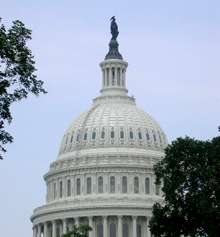
During the environmental movement's heydey of the 1970s, Congress enacted five milestone pieces of legislation related to the marine environment that greatly expanded NOAA's conservation and resource management regulatory responsiblities.
In the 1970s, Congress passed a suite of legislation underscoring the importance of sound environmental science and effective stewardship of the nation’s natural resources. Five of these authorities, dedicated to marine resource conservation, remain major legal mandates that altered and significantly expanded NOAA’s stewardship activities from that time on. The laws are:
- Marine Mammal Protection Act;
- Marine Protection, Research, and Sanctuaries Act;
- Coastal Zone Management Act;
- Endangered Species Act; and
- Fishery Conservation and Management Act.
Historical Context
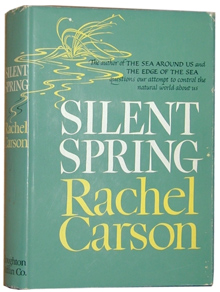
Published in 1962, Silent Spring was a clarion call and wellspring of support for new public policies to end decades of environmental abuse. The momentum generated by this bellwether of environmental concern carried into the 1970s, sparking Congress to enact an array of conservation legislation.
Congress enacted these laws on the wave of widespread environmental activism of the late 1960s and early 1970s. Writings like Rachel Carson’s Silent Spring (1962), and Garrett Hardin’s essay “Tragedy of the Commons” served as calls to action to prevent and undo damage to the natural environment. Incidents like the 1969 Santa Barbara oil spill and ongoing problems like the loss of coastal wetlands and ocean dumping heavily influenced public concern for the marine environment. This was the era of environmental legislation’s highest profile.
Until the early 1970s, NOAA's regulatory resource management responsibility was limited mainly to protecting a handful of fish species and marine mammals. The spate of legislation in the midst of the environmental movement suddenly gave NOAA the responsibility to protect all marine mammals and endangered species, to manage virtually all U.S. fish stocks and to regulate activities in national marine sanctuaries. Although Congress did not give NOAA power to regulate other activities in the coastal zone, NOAA now had to ensure that coastal states that wanted to implement coastal zone management programs under the Coastal Zone Management Act held sufficient regulatory authority to address their most important resource management issues. Implementing these laws brought profound change to a federal agency accustomed primarily to observing, measuring, and predicting ocean and atmospheric phenomena and promoting commercial fishing.
The early challenges facing NOAA to implement the unfamiliar stewardship responsibilities imposed by these landmark pieces of marine resource conservation legislation are summarized below.
Marine Mammal Protection Act (1972)
Prior to 1972, NOAA was responsible for managing north Pacific fur seals in Alaska’s Pribilof Islands and protecting whales subject to the International Whaling Convention. But in responding to public outcries over the deaths of thousands of dolphins in the Pacific tuna fishery, images of ritual clubbing of Canadian harp seals, and severely depleted whale stocks worldwide, Congress thrust on NOAA the responsibility to conserve marine mammals by enacting the Marine Mammal Protection Act (MMPA).
NOAA enjoyed several distinguished achievements implementing the this landmark legislation. Its most notable success was slashing dolphin deaths incidental to purse seine fishing for yellow-fin tuna in the eastern tropical Pacific Ocean. Dolphin mortality decreased from more than 300,000 dolphins per year to fewer than 2,000.
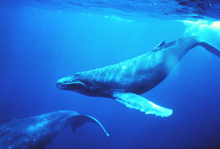
All marine mammals, like these Humpback whales, are protected by the Marine Mammal Protection Act. Humpbacks are listed as "depleted" under this law and as "endangered" under the Endangered Species Act. Click image for larger view.
But the MMPA had many exceptions that allowed for taking a marine mammal, provided that doing so would not imperil a stock’s population. NOAA would now have to judge whether to allow exceptions. Knowing the population status of marine mammal stocks–information that NOAA did not have when Congress enacted the MMPA–was immediately imperative. Acquiring this information became one of the most challenging aspects of implementing the new law.
The need for information on marine mammal populations set in motion a lengthy process of stock assessments for all marine mammals in the offshore, 200-mile wide U.S. Exclusive Economic Zone. NOAA now maintains 155 stock assessment reports (representing nearly 90 percent of marine mammals stocks under U.S. jurisdiction) that provide information necessary to make informed management decisions on taking marine mammals. The biological and population information collected on marine mammal stocks needed to make informed management decisions remains one of NOAA’s major, and often overlooked, contributions to marine mammal conservation stemming from the MMPA.
Marine Protection, Research, and Sanctuaries Act (1972)
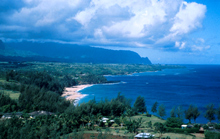
A shoreline view of the protected waters of the Hawaiian Islands Humpback Whale National Marine Sanctuary. Monk seals and spinner dolphins frequent this area. Click image for larger view.
The Marine Protection, Research, and Sanctuaries Act authorized the Secretary of Commerce to designate and manage ocean areas as national marine sanctuaries for the pupose of preserving or restoring marine areas for their conservation, recreactional, ecological, or esthetic values. Some of the most formidable challenges initially faced by NOAA to carry out this program were finding support for designating sanctuaries and resolving multiple, and often conflicting uses within these areas that were intended for resource protection. The oil and gas and the commercial fishing industries were particulary concerned during early years of the program over the potential, but then unknown, geographic extent of sanctuaries how their activities might be affected.
Throughout sanctuaries’ early years in particular, NOAA grappled with the challenge of preserving resources that sancturies are created to protect and simultaneously permitting other uses. NOAA has consistently risen to the challenge of managing these special areas for marine and historic resource conservation while still allowing compatible commercial and recreational activities. As of 2007 NOAA protects 13 national marine sanctuaries and one marine national monument covering over 150,000 square nautical miles, an area larger than all our national parks combined.
Coastal Zone Management Act (1972)

To implement the Coastal Zone Management Act, NOAA had to analyze and evaluate state laws to ensure that they were adequate to manage a host of issues such as wetland protection, shoreline erosion, and coastal development. Click image for larger view.
The Coastal Zone Management Act (CZMA) immersed NOAA into an unfamiliar but emerging field of managing human development along our nation’s shoreline. Coastal states entered voluntary partnerships with NOAA to develop programs to manage coastal areas using their own laws and regulations. A major incentive for states to participate in this partnership was a provision of the CZMA that required federal agency programs and activities to be consistent with the enforceable policies of a state's program.
NOAA’s challenge during the early years of the program was four-fold: to establish the standards for state programs to achieve federal approval, and therefore federal funds, to implement their programs; to guide the states to meet the standards for federal approval; to evaluate and approve state management programs; and to develop the rules and regulations to that required federal agencies to act consistently with federally approved state programs. Initially, NOAA had to figure out how to do this within a three-year period program development period while working with 35 coastal states and territories. By 1979, NOAA had approved 19 state programs, covering 69 percent of the nation’s shoreline. Today, 34 of the 35 eligible coastal and Great Lakes states and territories participate in this partnership, managing over 95,000 miles of U.S. coastline.
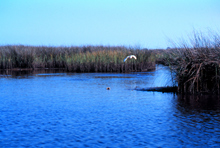
A great white heron at the Grand Bay National Estuarine Research Reserve in Mississippi. Among its provisions, the Coastal Zone Management Act called for a national system of estuarine sanctuaries for research, stewardship, public awareness, and education. Click image for larger view.
The CZMA also called for a national system of estuarine sanctuaries (later referred to as research reserves) to represent biogeographic regions for the purpose of long-term research, stewardship, public awareness, and education. Twenty-seven reserves are now part of the state-federal partnership that protects over one million acres of coastal lands and waters in these protected areas.
Endangered Species Act (1973)

Following the passage of the Endangered Species Act of 1973, NOAA reviewed the population status of various marine species and determined that several, including the Hawaiian monk seal shown here, are endangered. Click image for larger view.
Prior to 1973, NOAA had no regulatory authority to protect marine species that were threatened with extinction. The Bureau of Commercial Fisheries, before it became part of NOAA in 1970, managed commercial whaling to protect diminishing whale populations under an international convention, but not under earlier endangered species laws.
With passage of the Endangered Species Act (ESA) of 1973, NOAA became responsible for protecting marine species that were in immediate danger of extinction (endangered) or would likely become endangered in the foreseeable future (threatened). NOAA faced formidable “growing pains” to adjust its institutional thinking beyond commercial fisheries. Among the challenges were: elevating its endangered species responsibilities within NOAA’s priorities in order to receive a budget and staff to implement the law; developing regulations to prohibit taking endangered species and to protect threatened species; determining which species would be protected by NOAA and which by the U.S. Fish and Wildlife Service, particularly with regard to sea turtles; and establishing protocols for issuing permits for public display of or research on endangered species.
NOAA conducted status reviews of various marine species leading to the listing of green, loggerhead, and Pacific ridley sea turtles and the Hawaiian monk seal as either threatened or endangered. NOAA’s National Marine Fisheries Service (NMFS) also began designing a device to exclude sea turtles from shrimp trawl nets. With the listing of these sea turtle species under the Endangered Species Act of 1973, NMFS also began to protect critical habitat for these species.
Another major initiative brought on by this new law, called for NOAA to work with 11 other federal agencies to create a system of interagency review of federal agency actions that might impact endangered or threatened species. NMFS also worked with the U.S. Customs Service and the U.S. Fish and Wildlife Service to prevent importing endangered species, and began participating in both the Management Authority and Scientific Authority of the new Convention on International Trade in Endangered Species of Wild Fauna and Flora.
Today NOAA protects 64 marine and anadromous species out of a total of 1,880 listed as threatened or endangered under the ESA. Some of NOAA’s biggest endangered species achievements are recovery of the gray whale and significant progress in recovery of sea turtles.
Fishery Conservation and Management Act (1976)
The Fishery Conservation and Management Act (FCMA) (renamed the Magnuson-Stevens Fishery Conservation and Management Act in 1996) brought federal regulatory jurisdiction to fishery resources between the U.S. territorial sea–generally three miles offshore–and 200 miles offshore in a fishery conservation zone. (This area was later changed to the U.S. Exclusive Economic Zone or EEZ.) Congress passed the law chiefly to address heavy foreign fishing in U.S. waters, promote the development of a domestic fishing fleet, and link the fishing community more directly to the fishery management process. The FCMA effectively phased out foreign fishing vessels and factory processing ships from U.S. waters and established eight regional fishery management councils that are responsible for preparing fishery management plans for commercial and recreational fishing within U.S. waters.

A foreign fishing trawler in the northwest Atlantic in 1969. Congress passed the Fishery Conservation and Management Act in 1976 chiefly to phase out heavy foreign fishing in U.S. waters and improve opportunities for the U.S. commercial fishing industry. Click image for larger view.
The FCMA brought enormous institutional change to NOAA’s National Marine Fisheries Service (NMFS). Since Congress established the U.S. Commission on Fish and Fisheries in 1871, the Commission and it descendant agencies worked mostly to promote commercial fishing, conduct fisheries research, and culture fish and shellfish. Over the years the U.S. Congress enacted legislation generally to protect a handful of individual species or limited group of species. Pacific and Alaska salmon, sponges in the Gulf of Mexico, Pacific halibut, and high seas tuna were some of the fisheries subject to these laws. But none approached the sweeping breadth of the FCMA, which brought nearly all U.S. fish stocks under regulatory scrutiny.
NMFS faced daunting challenges to implement this revolutionary authority. It needed to: set up the eight regional fishery management councils and establish their operating procedures; identify the fishery stocks subject to commercial and recreational harvesting; evaluate the health and population status of these stocks; determine how to allocate fish stocks for harvest among fishers, both foreign and domestic and commercial and recreational; and create a program to enforce stock allocations.
As a result of the Fishery Conservation and Management Act, NMFS, with the assistance of the regional fisheries councils, now manages about 530 fish stocks or stock complexes 1. Phasing out of foreign fishing in the U.S. Exclusive Economic Zone, the development of domestic harvesting and processing capability, and rebuilding overfished stocks remain NOAA’s proudest achievements under the law. And the Fishery Conservation and Management Act, along with other revolutionary breakthroughs such as the concept of large marine ecosystems and ECOPATH modeling (both noted elsewhere as NOAA Top Ten Breakthroughs) helped bring about a gradual but highly significant, decades-long shift in how best for NOAA to manage fisheries, from single species, to multiple species, and, finally, to the entire ecosystems.
Conclusion

With the exception of the Coastal Zone Management Act, the NOAA Fisheries Office of Law Enforcement enforces the 1970s conservation and stewardship legislation. NOAA is now responsible for enforcing nearly 35 federal conservation statutes, most of them enacted since the mid-1970s.
The conservation and stewardship legislation of the 1970s that blossomed from the environmental movement of the day ushered NOAA into a significantly increased regulatory role in resource management. NOAA suddenly needed to gather scientific information to support regulatory and resource allocation decisions (fisheries); to decide how to accommodate or manage multiple uses, some of which were potentially in conflict with one another (sanctuaries); to evaluate, issue, or deny requests for taking or using marine resources (marine mammals); to protect endangered species; and, to assesss coastal states’ ability to enforce natural resource laws at the state level (coastal zone management).
It was an exciting time for those in NOAA who were now responsible for figuring out how to carry out this stewardship legislation. They wrote the rules, but they were often in unfamiliar and uncharted territory and had little precendent to guide them. They bumped up against powerful interest groups that were concerned with how they would be affected by the new laws. The world of regulatory authority now required NOAA to temper or control resource use to meet its new stewardship responsibilities for proctecting the marine environment. In the span of five years, NOAA’s new roles and responsibilities had made it part of the nation’s “green” revolution.
1. A stock is a species, subspecies, geographical grouping, or other category of fish capable of being managed as a unit. A stock complex is a group of similar species harvested together or sharing a similar life history.










